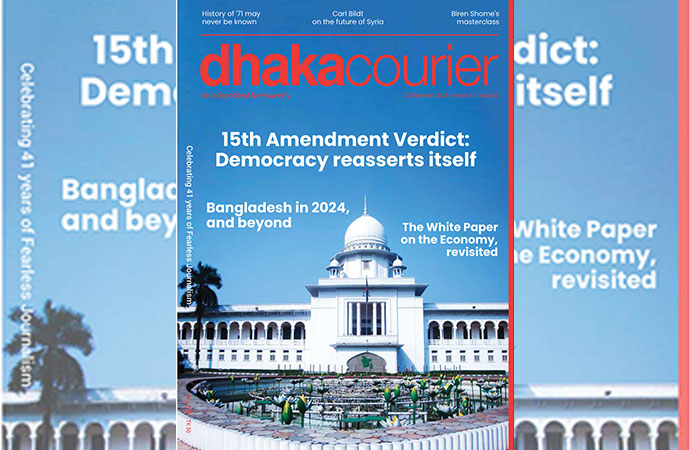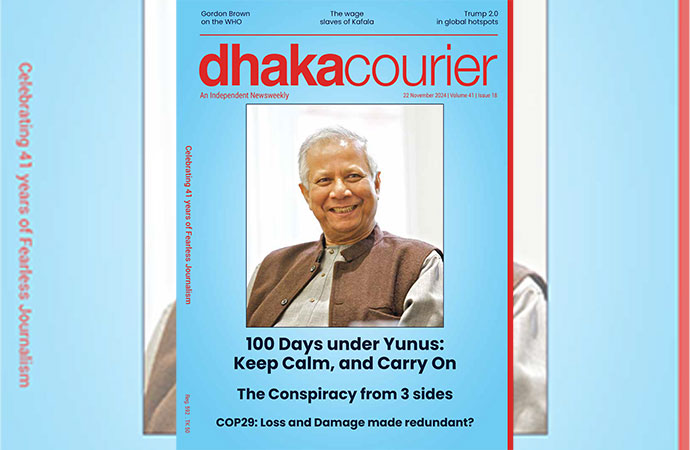Culture

What Jagdip Jagpal, the director of the coveted India Art Fair, said about Indian art in December 2018 sounded like the worst irony to the country's art business a year and a half later. "Indian contemporary art is close to a tipping point, thanks to biennales, residencies, funded initiatives, philanthropy, and a growing awareness of Indian Moderns."
This high note of optimism simply evaporated in thin air, the buoyancy gave way to despondency as the Covid-19 pandemic lashed the country and the government announced a nationwide lockdown in March 2020. The Indian art market, estimated at US dollars 14.6 million in 2017, showed signs of shrinking by close to seven percent within weeks.
Desolation and mayhem were palpable in the industry. Almost all auction houses in the country, which accounted for 37% of the art sales the previous year, downed their shutters.
The global art market, worth US dollars 64.1 billion in 2019, tanked over 5% within months after the pandemic spread across the world. China, the world's third-largest art and antique market, suffered a slide of 10% and art sales in India caved in by over 30% between March and June 2020.
An Art Basel and UBS report, prepared by Clare McAndrew, the founder of Arts Economics, quantified the impact of the pandemic and lockdown on art sales. In the first half of 2020, the gallery sale plummeted by 36% while the sale of auction houses dipped by 49% during the same period. Bloodshed in the art industry was everywhere in India and beyond.
An art exhibition at Kiran Nadar Museum scheduled to showcase paintings of more than 60 contemporary Indian artists in Moscow last year was soon postponed. Across India, hundreds of small, medium and big exhibitions were also either cancelled or postponed ad infinitum, putting the future of Indian art and artists too into unprecedented uncertainty. Even Art Basel in Hong Kong, Frieze New York and Art Dubai were cancelled.
Biraaj Dodiya must have been terribly frustrated as his first solo exhibition at Kolkata's Experimenter gallery had to be called off before schedule because of the lockdown and the Covid pandemic. Roshini Vadehra of the Vadehra Art Gallery in Delhi was unequivocal in announcing its decision not to go ahead with its scheduled exhibitions in May 2000.
Delhi-based galleries like Latitude 28 and Kiran Nadar Museum of Art indefinitely postponed their scheduled celebrations. Both the galleries completed the tenth year of their existence and dabbling in art.
The body blow the Indian art industry suffered was indeed disorienting. The slowdown it forced down on the art was not anticipated and made many a line and colour splashes on the artists' canvases go haywire. The crisis came all of a sudden sans any warning.
"Covid came as a tsunami. The industry was caught totally unprepared," Tushar Singh, an emerging artist based in Delhi, told UNB. Three of his solo exhibitions got cancelled -- twice in 2020 and one in 2021 as the second wave of the pandemic swept the nation. He is facing a dark future today.
The dent that the pandemic and the consequent lockdown wrought, notwithstanding the Indian art found inspiration in what John Milton wrote in 'Paradise Lost': "What though the field be lost? All is not Lost; the unconquerable will, And the courage never to submit or yield."
However, at the end of the dark tunnel, the Indian art industry found itself there was light. Indian art industry and business, desperate in its quest to find a way out of the crisis, smelt opportunity in what Sotheby innovated.
The industry which resiliently survived the economic meltdown in 2008 and demonetisation onslaughts in 2016 quickly shifted to digital format, holding virtual exhibitions and offering online viewing rooms to prospective buyers and collectors. In April last year, 10 Indian and Dubai galleries jointly organised an online art exhibition -- In Touch. It showcased works of many Indian artists, including Arpita Singh, Bharti Kher, Abir Karmakar and Aditi Singh.
Shifting to digital platforms, organising online exhibitions and auctions, offering virtual viewing rooms and breaking away from the traditional boozy auctions helped the Indian art market to grow by at least 5% even during the lockdown last year.
And on September 3, 2020, the Indian art world created a record. An untitled oil of VS Gaitonde, painted in 1974, was sold by Pundole's in Mumbai for a staggering Indian rupees 32 crore. This 60x40 inch painting was purchased by an overseas buyer over the phone.
"The sale of Gaitonde's oil was indeed a matter to celebrate, but trepidations in the Indian art market are still palpable. The market has not really expanded even as we are into the middle of 2021 and all technical innovations notwithstanding," said Shekhar Chaubey, another artist based in the national capital.

























Leave a Comment
Recent Posts
Curtain rises on 6th National ...
The month-long '6th National Sculpture Exhibition 2024', organ ...
Thailand's sea nomads strive t ...
When Hook was a child, he started his days by jumping off the boat tha ...
Liliums grown in Bagerhat show surprising promise fo ..
Bangladesh’s three divisions brace for rain
Prioritise reconstruction of Gaza, West Bank, Lebano ..
In support of the vision set forth by the CA